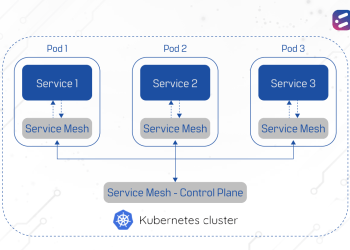The importance of digital onboarding
As the digital era continues to progress, modern customers expect ever faster and easier delivery of products and services. And in a world where the customer is king, every industry has no alternative but to embrace the digital revolution.
The financial sector is no exception – online transactions, automated payments, and mobile management of accounts are just a few examples of digitization in the industry. But most banks are still missing out on one area – digital onboarding.
Onboarding is the very first step a bank takes with a customer – the various digital services a bank will offer for the customer’s convenience will only come after this important first stage in the journey. With competition increasing almost on a daily basis, it is important that a bank or financial institution offers a digital experience from this very first step.
Onboarding challenges faced by financial institutions
- The typical bank onboarding requires far too much manual processing. Physical forms require time and dedicated effort to fill, and errors can result in needing to fill out a new form a second time. A digital onboarding process, on the other hand, offers a great deal of flexibility.
- In addition to the need to fill up extensive forms, customers are also expected to submit a number of physical documents – which only adds to the hassle. Most often, customers are too overwhelmed by the sheer amount of paperwork and tend to give up sooner than later. They are bound to find other institutions that allow for faster and easier processing, preferably online.
- To remain compliant, banks and other financial institutions need to ask for a certain amount of information and collect a certain number of documents – but an online platform could provide autofill options so users do not have to keep rewriting the same name, address or other details more than once.
- It’s not just for customers – having piles of papers to process is a major challenge for financial institutions too. The process takes weeks to complete – adding to customer frustration – or requires a number of backend personnel to complete on time. Either way, offline onboarding is a costly affair.
- The lack of digital onboarding may also mean that the financial institution is missing out on digitally native millennials. With a large chunk of this population already in the workforce, a financial institution must definitely look at ways of adding them to their clientele.
- Digital onboarding processes can be fitted with smart analytics features that capture customer behavior. This information can then be assessed to make improvements to the overall onboarding process. On the other hand, offline onboarding processes have limited scope for improvement.
Digital solutions to address onboarding challenges
Intuitive UI and UX
Walking customers through the registration process with large icons and easy-to-digest content, helping them move from one step to another seamlessly without having to enter the same information multiple times, and giving customers the flexibility to come back at a later time and continue filling an unfinished application – these are all ways to boost convenience and minimize the number of dropouts.
AI and Automation
Are customers lingering too long on a page or having trouble with completing a step? A chatbot can step in and offer a friendly tip or ask if assistance is required. In addition to bringing down the possibility of dropping out and increasing customer satisfaction, chatbots have been estimated to save over $174 billion across industries annually.
Automated email nudges that reach out to customers who didn’t complete the onboarding process, and emails that ask for feedback from customers who have opted to bank elsewhere, are also simple, yet effective techniques.
Digital KYC
The most challenging step in the onboarding process is the KYC (Know Your Customer) which requires validation of customer details.
Even this can be digitally enabled or made flexible enough to suit customers’ convenience. Emerging trends include video verification, verification at home, or verification through a nearby convenience store and not necessarily the nearest branch of the bank itself.
Business benefits of digital onboarding solutions
- Moving towards the digitization of processes not only improves customer experience but also brings down the workload of your team and reduces paperwork.
- An efficient digital onboarding process results in reduced time for KYC due diligence and helps you begin transacting with your customer sooner.
- Having an intuitive digital onboarding process in place can deliver a competitive edge over other institutions offering the same products and services.
- A great onboarding experience not only brings in steady revenue from happy customers but also converts them to repeat customers who will consider and opt for other products/services you offer. When you have an end-to-end digital platform in place, you have many more opportunities to cross-sell and up-sell.
- Digital customers who are onboarded successfully also tend to be loyal and more interactive.
- Happy customers are a great source of word-of-mouth marketing and will refer your bank/institution to their friends.
Digital services translate to easier access, better availability, and quick and efficient processing of services as well. With shorter waiting times, customers can make faster decisions, and financial institutions can benefit from this dynamic as well.
CloudNow’s onboarding solutions have helped our customers bring down overall onboarding time and automate processes through seamless technology solutions. Find out how we helped a global bank onboard customers fas_ter with ease or get in touch with us today!













